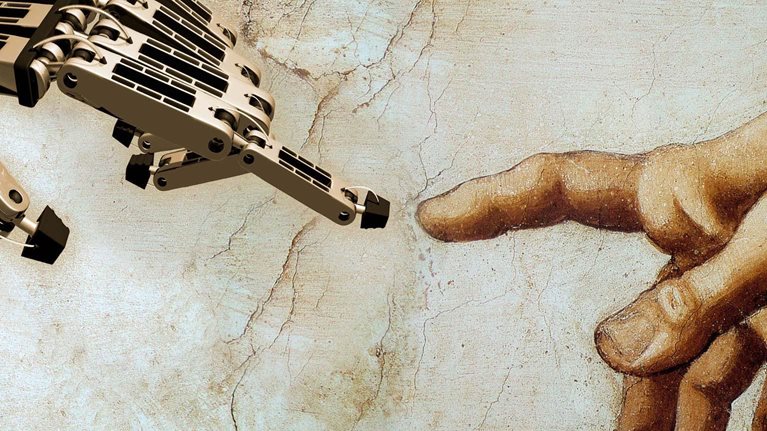For traditional companies, making the transition to thinking and acting digitally is easier said than done. Yet digital natives must also continually work to maximize the advantages of digital technology. In this interview, Google’s vice president of US sales and operations, Jon Kaplan, tells McKinsey’s Barr Seitz how the company’s culture developed and how Google keeps pushing to retain its entrepreneurial spirit. An edited transcript of Kaplan’s remarks follows.
Elements of Google’s DNA
From the very beginning, we were actually incredibly scrappy. Think about Larry and Sergey’s1 first servers: they were built, in part, with Legos. Literally, with Legos. It’s in the Smithsonian Museum right now. It was because they wanted to build the most efficient servers they possibly could. And they had very little money, so they built their own, and they built them with the materials that they had, that they thought would work.
That’s just one example of how scrappy the company had to be in the early days, and I think that’s really a part of what we’re trying to keep in the culture of the company. I think that’s number one. Number two is that we’re a data-driven company. At Google, you really don’t walk into a meeting talking about your gut feel on something. You need to have the data to back it up. And so data is another key tenet of what’s made our decision making really successful.
Third is that we have to be agile. As you think about the businesses that we are in and how the company has changed over the last 10 or 15 years, it’s totally different today than when we started. So we have to have leaders, we have to have employees, and we have to have technology that is all very agile for where the industry is going.
What agile means at Google
We do dozens of tests and experiments every single quarter. We can do that with a 1 percent test, for instance, on our core search product—scale that up if it’s successful, but we can start very small and test a theory, and if it doesn’t work, we can very quickly pull that back. That’s a really important part of what we do every day. We do thousands of tests a year on our various products to see how they perform, again, on a very small subset of our audience.
One of the hallmarks of Google, though, is how do we learn from failures that happen in this test-and-learn culture? And we have many examples of failure, first of all, and of using that information to improve the product going forward. We celebrate failure. Google Buzz is a great example of that. It was not a successful product in the social ecosystem, but we used that experience to understand how we would iterate for Google Plus in a much better way.
Focusing on the ‘10x return’
Everybody in the world is thinking about the next 10 percent. How do you think about a 10x improvement in an industry? Our role is how do you apply a technology to that—to fundamentally transform that industry? Think about the implications to this. If you are successful, there’s no competition, because you’re creating something that has never been created before. You’ve got an opportunity to really define a market. Second, it really inspires people to think big about the aspirations of the company and how they could do something that really does change the overall trajectory of an industry.
And third, you get the best people who want to solve the biggest, toughest problems in the world. And so, by nature, people want to start to work on those problems, and even if there’s just a halo effect of working at Google, that’s a real benefit for us.
There are product managers who can create amazing, incredible products. An example of this is our contact-lens project, Iris, which applies technology to the contact lens—the contact lens is connected to the Internet and it monitors your glucose. We were able to launch this as a product and then, in partnership with our business organization, struck a deal with Novartis to license it. That’s a great example for somebody who has a very tangible product. I think it’s now permeated the entire organization to say, “What does a 10x relationship change with our clients look like?”
How Google supports its culture
We are, as you could imagine, highly analytical about our culture. One of the key ways that we measure how Google is changing over time is called Googlegeist, which is our internal survey that we give to all of our employees once a year, in January. It covers every aspect of what a great culture would include: innovation and autonomy, forward thinking, teamwork. All the things that are important to the DNA of the culture. This is a very comprehensive study.
We look at this and analyze it every single year, and then we actually take every piece of feedback—the big buckets of feedback, where we need to improve—and, over the course of the rest of the year, all of our programs are designed to address the areas of our Googlegeist feedback that have not performed very well.
Balancing innovation and business results
The 20 percent time has been a hallmark of Google’s culture from the very beginning. And I think that’s attracted people to come and work on a core product, but to have the ability to think about where this could go that would be, again, tangential to the core product.
I think it’s something that continues to be important to the culture, but it’s not hard and fast. It’s not literally that you have one day a week that you can go work on something totally different. You need to think about, if you’re an engineer, for instance, how that product—that 20 percent time product—would be complementary to something that is now our focus. In the early days, it was “Let a thousand flowers bloom, and we’ll see what happens.” Now there’s a lot more focus, and we say, “If we’re going to do 20 percent time, how is it tangential to a core product?”
Importantly, it can’t be just you out there doing your own 20 percent time. You need to create a team that would go work on a 20 percent project. So part of it is, you’ve got to be a good salesperson internally. Part of it is that it needs to be something that you are able to convince people that it’s a good enough idea that they should take their 20 percent time and go work on it, as opposed to creating their own idea.
Rapid prototyping in action
The concept of rapid prototyping is something that we have had to learn as we’ve got into new industries, like hardware. I think there are a couple of things that have benefited us as we’ve gone into that. First, we’ve actually brought the expertise of hardware manufacturing and fabrication in-house in some cases. So we have tinkerers—people who actually like building things. And it’s not going to be beautiful or perfect by any means. But there are incredible labs at Google where they are creating these initial prototypes.
I think second is that the technology, the software and hardware that are available, is allowing us to iterate very, very quickly. That’s a difference between a decade ago, where rapid prototyping wasn’t really something you could do with the hardware and software that were available. Those two things have been, most importantly that first one, the change that Google had to go through.


